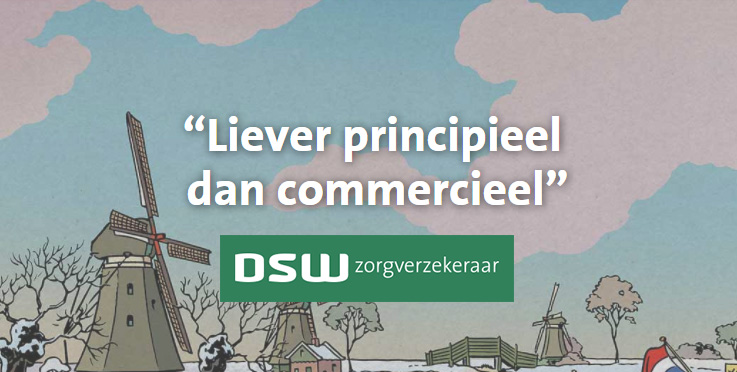Study guide with Attention: Theory and Practice
Online summaries and study assistance with the 1st edition of Attention: Theory and Practice by Johnson & Proctor
- For Bulletsummaries with Attention: Theory and Practice by Johnson & Proctor, see Bulletsamenvattingen per hoofdstuk bij Attention: Theory and Practice
- For Bulletsummaries with Attention: Theory and Practice by Johnson & Proctor, see Bulletsummaries per chapter with Attention: Theory and Practice
- For Booksummaries with Attention: Theory and Practice by Johnson & Proctor, see Samenvattingen per hoofdstuk bij Attention: Theory and Practice
- For Booksummaries with Attention: Theory and Practice by Johnson & Proctor, see Summaries per chapter with Attention: Theory and Practice
- For all available summaries and bulletpoints with Attention: Theory and Practice by Johnson & Proctor, see Study guide with Attention: Theory and Practice by Johnson & Proctor
Related content on joho.org
Meer lezen over studie, stage en samenvattingen
Gerelateerde pagina's
Biopsychologie en neurologie studeren en stage in het buitenland
Psycholoog en coach in het buitenland via betaald werk, stage of vrijwilligerswerk
Studeren in het buitenland verzekeren
Therapeutische vaardigheden: leren of versterken
Relaties en meer lezen
JoHo: crossroads via de bundel
- Wat zijn neuronen en wat zijn cellen?
- Samenvatting van Abnormal Psychology: The Science and Treatment of Psychological Disorders van Kring et al.
- Samenvatting van Anxiety van Rachman
- Samenvatting van Attention: Theory and Practice van Johnson & Proctor
- Samenvatting van Behavioral Genetics van Plomin e.a.
- Samenvatting van Biological Psychology van Kalat
- Samenvatting van Brain and Behavior Custom UU edition van Kalat and Cacioppo et al. - 2025/2026
- Samenvatting van Cognitive Neuroscience: The Biology of the Mind van Gazzaniga et al.
- Samenvatting van Consciousness: An Introduction van Blackmore & Troscianko
- Samenvatting van Developmental cognitive neuroscience van Johnson e.a.
- Samenvatting van Developmental Neuropsychology: A Clinical Approach van Anderson et al.
- Samenvatting van Emotion Science van Fox
- Samenvatting van Essential Neuroscience van Siegel & Sapru
- Samenvatting van Fractured Minds: A Case-Study Approach to Clinical Neuropsychology van Ogden
- Samenvatting van Fundamentals of Human Neuropsychology van Kolb & Whishaw
- Samenvatting van How the Special Needs Brain Learns van Sousa
- Samenvatting van Human Factors in Simple and Complex Systems van Proctor & van Zandt
- Samenvatting van Memory van Baddeley et al.
- Samenvatting van Methods in Social Neuroscience van Harmon-Jones & Beer
- Samenvatting van Neuropsychological Assessment van Lezak et al.
- Samenvatting van Neuropsychologische Diagnostiek: de klinische praktijk van Hendriks et al.
- Samenvatting van Physiology of Behavior van Carlson
- Samenvatting van Principles of Cognitive Neuroscience van Purves et al.
- Samenvatting van Psychology of Emotion: Interpersonal, Experiential, and Cognitive Approaches van Niedenthal e.a.
- Samenvatting van The Neuroscience of Clinical Psychiatry van Higgins & George
- Samenvatting van The Neuroscience of Human Relationships van Cozolino
- Samenvatting van The Students Guide to Cognitive Neuroscience van Ward
- Samenvatting van The Student’s Guide to Social Neuroscience van Ward
- Psychologie en Gedragswetenschappen: uitgelichte boeksamenvattingen
- Samenvatting van An Introduction to Cognitive Psychology van Groome
- Samenvatting van An Introduction to Human Factors Engineering van Wickens e.a.
- Samenvatting van Attention: Theory and Practice van Johnson & Proctor
- Samenvatting van Brain and Cognition Custom edition UU van Goldstein a.o.
- Samenvatting van Brain and Cognition van Lubbe
- Samenvatting van Cognition: The Thinking Animal van Willingham
- Samenvatting van Cognitive Behavioural Processes Across Disorders van Harvey e.a.
- Samenvatting van Cognitive Development and Cognitive Neuroscience: The Learning Brain van Goswami
- Samenvatting van Cognitive Neuroscience: The Biology of the Mind van Gazzaniga et al.
- Samenvatting van Cognitive Psychology van Gilhooly e.a.
- Samenvatting van Cognitive Psychology van Goldstein & Van Hooff
- Samenvatting van Cognition: Exploring the Science of the Mind van Reisberg
- Samenvatting van Consciousness: An Introduction van Blackmore & Troscianko
- Samenvatting van Current Psychotherapies van Wedding & Corsini
- Samenvatting van Human Memory van Radvansky
- Samenvatting van Sensation and Perception van Coren & Ward
- Samenvatting van Sensation and Perception van Wolfe et al.
- Samenvatting van Sensation and Perception van Yantis and Abrams
- Samenvatting van Social Cognition: How Individuals Construct Social Reality van Greifeneder & Bless
- Samenvatting van Talking the Talk: Language, Psychology and Science van Harley
- Samenvatting van The Science of Consciousness van Harley
- Samenvatting van What is this thing called Knowledge? van Pritchard
- Psychologie en Gedragswetenschappen: uitgelichte boeksamenvattingen
Biopsychologie en neurologie studeren en stage in het buitenland
Activiteiten in buitenland
Nieuws
JoHo: partners met impact
JoHo: aanmelden of upgrade
JoHo WorldSupporter: crossroads
JoHo: crossroads in spotlight
- 1 of 4
- volgende ›
JoHo: pagina type checken
JoHo 'Teksten 'pagina
Wat is een JoHo 'Teksten' pagina?
- JoHo 'Teksten' zijn tekstblokken en hoofdstukken rond een specifieke vraag of een deelonderwerp
Wat vind je op een JoHo 'Teksten' pagina?
- Crossroad: volgen
- Via een beperkt aantal geselecteerde webpagina's kan je verder reizen op de JoHo website
- Crossroad: kiezen
- Via alle aan het chapter verbonden webpagina's kan je verder lezen in een volgend hoofdstuk of tekstonderdeel.
- Footprints: bewaren
- Je kunt deze pagina bewaren in je persoonlijke lijsten zoals: je eigen paginabundel, je to-do-list, je checklist of bijvoorbeeld je meeneem(pack)lijst. Je vindt jouw persoonlijke lijsten onderaan vrijwel elke webpagina of op je userpage
- Dit is een service voor JoHo donateurs
- Aanmelden
- Hier kun je naar de pagina om je aan te sluiten bij JoHo, JoHo te steunen en zelf en volledig gebruik te kunnen maken van alle teksten en tools.
- Aanmelding: checken
- Hier vind je wat jouw status is als JoHo donateur met of zonder abonneeservices
JoHo: footprint achterlaten



















